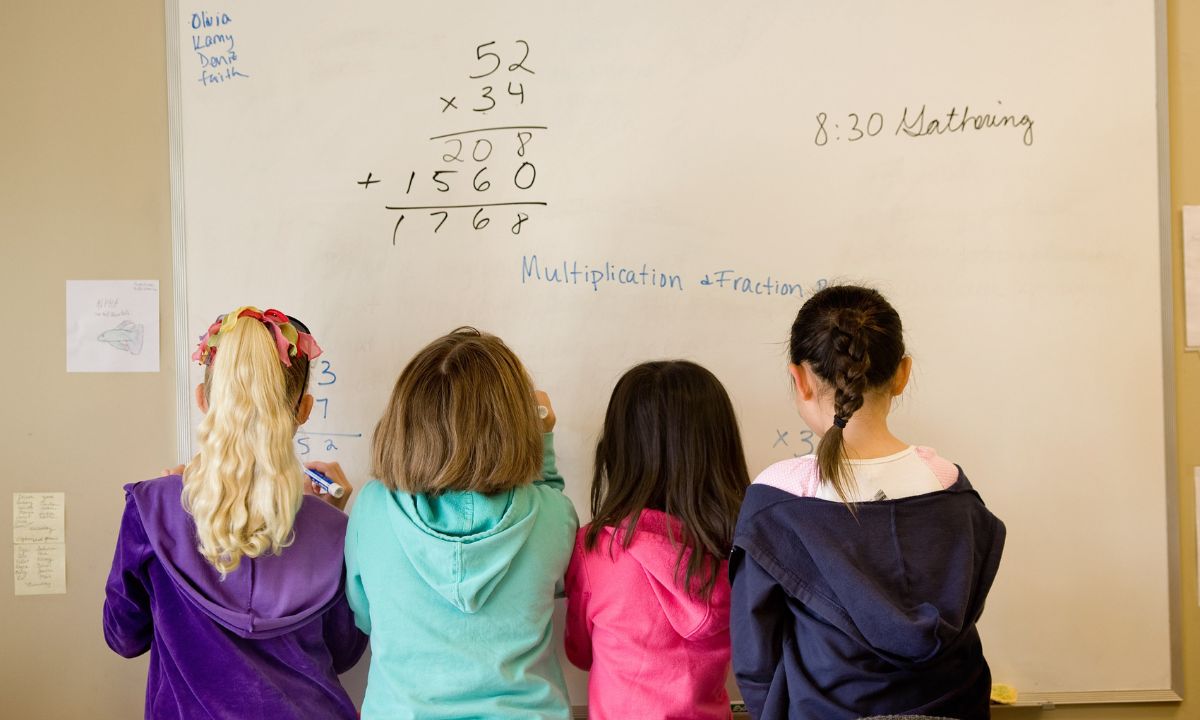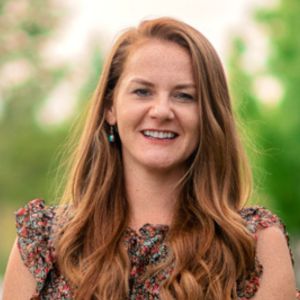Let’s Rethink How We Teach Early Math – Starting with Teacher Prep
Nelson and Zhou: Ensuring future teachers know how to teach math to young children is one of the most powerful steps we can take.

Get stories like this delivered straight to your inbox. Sign up for The 74 Newsletter
Research consistently tells us that foundational math skills are strong predictors of later academic success –- not only for advanced math but also for reading and cognitive development. In fact, early math proficiency in kindergarten has also been found to be a better predictor of later academic success than early reading proficiency.
But the attention that math actually gets, from classrooms to statehouses, doesn’t reflect the gravity of its long-term impact. The latest data from the National Assessment of Educational Progress (NAEP) revealed that math scores for fourth-grade students saw the largest drop in the assessment’s 50-year history, with declines the steepest for students furthest from opportunity.
Just as the science of reading has sparked system-wide shifts in how literacy is taught, the science of how early math must be taught deserves the same attention and action.
Too often, the issue starts with how we prepare future teachers. A recent National Council on Teacher Quality (NCTQ) report found that most teacher-preparation programs devote insufficient time to key math concepts. When new teachers lack confidence and skills in early math instruction, their students risk falling behind, setting off a chain reaction that can limit students’ long-term potential.
As a nation, we can change this reality by investing in teacher-preparation programs –- one of the first and most important junctures to shape mindsets, beliefs, and practices. Ensuring that future teachers receive high-quality, evidence-based preparation in teaching math to young children is one of the most powerful steps we can take to improve learning outcomes.
In 2024, Deans for Impact (DFI) launched the Early Numeracy by Scientific Design (ENbSD) Network to support programs that bring evidence-based instructional practices to the forefront of teacher training. The network convened three Texas educator-preparation programs – Sam Houston State University, Texas A&M University Texarkana, and Stephen F. Austin State University – to redesign how future educators are prepared to teach math in PreK-3 classrooms. This network builds on DFI’s decade-long work to help programs redesign preparation experiences grounded in evidence-based instruction; since 2015, DFI has supported more than 260 programs to ensure 110,000 future teachers across 45 states are better prepared for the classroom.
In our first year of the math initiative, we kicked off conversations with faculty, both in mathematics departments and in colleges of education, to understand the current state of early math instruction in their programs and identify critical next steps to redesign coursework. We observed instruction in K-3 classrooms, reviewed data on teacher-candidate knowledge and skills, analyzed course materials, and gathered expert feedback to reveal current strengths and opportunities for growth. We also used three research-based instructional practices to guide our work: balancing conceptual and procedural knowledge, focusing on mathematics language, and implementing explicit and systematic instruction.
Over the course of the year, faculty used this framework to examine their syllabi and coursework and to begin co-designing improvements. Through the first year of this work, we uncovered critical insights that can inform how more teacher-preparation programs can support the success of Pre-K math teachers and their students:
1. While math anxiety is real and widespread among teachers, thoughtful coursework design can alleviate concerns.
Many teacher candidates arrive in preparation programs with negative experiences or insecurities about math. This anxiety affects how they engage with the material and how they’ll eventually teach it. Addressing this challenge requires thoughtful design of coursework that builds confidence and reinforces math as something aspiring teachers can understand and teach well.
2. Early math classrooms cannot be underestimated as a critical lever for students’ long-term success.
There’s a persistent assumption that early math is “easy,” but that couldn’t be farther from the truth. While many children may have a basic grasp of counting upon entering school, research tells us that they can benefit from teachers not only reinforcing these skills but also exposing them to more advanced mathematical concepts earlier on. Doing so ensures that more students access and cement foundational skills, which is essential given how much academic math builds on prior knowledge. While aspiring teachers may find basic number sense and operations skills easy to grasp, the knowledge and skill required to assess where students are in their learning and make effective instructional moves can lead to early success and confidence. As a result, we’re designing instructional modules that ensure learning opportunities that bridge content and instructional knowledge.
3. Collaboration across teacher-preparation programs and K-12 partners is essential for stronger preparation.
In many universities, math content is taught separately from math pedagogy, sometimes in entirely different departments. As a result, future teachers may learn about mathematical concepts in one class but not learn how to actually teach them until a course several semesters later. They also might not get any opportunities to observe or practice in real PreK-3 classrooms during their preparation, losing out on real-world experiences to hone their skills. Without intentional collaboration across these areas, future teachers experience disjointed training. Our network sought to address this misalignment by creating space for mathematics faculty and teacher educators to meet regularly, give each other feedback, and align their instruction to support teacher candidates more holistically. These bridges unlock enormous potential for program-wide change. In one instance, a math and education professor were compelled to co-teach a course together, an unprecedented collaboration in the program that supported candidates to meaningfully connect the dots between content and instruction.
Looking ahead to year two of the network, we hope to strengthen the way we prepare teachers with new instructional modules ready to be piloted in the fall and stronger collaboration across faculty, partnering K-12 schools, and programs. We’re working with faculty across departments to build a strong, cohesive arc for how early numeracy is taught across entire preparation programs. Most importantly, these programs are modeling what’s possible in teacher preparation.
Improving math instruction is not just a job for prep programs and K-12 school districts. State policymakers can uphold high standards for effective preparation aligned to evidence and require or incentivize ample on-the-job learning opportunities for aspiring teachers to put knowledge into practice. Philanthropy organizations and funders can invest in emerging efforts and lift up promising models of effective practice.
When teacher-prep programs are empowered to make evidence-based early numeracy a priority, all teachers and students stand to benefit.
Get stories like these delivered straight to your inbox. Sign up for The 74 Newsletter

;)

